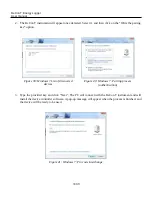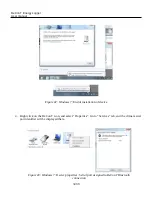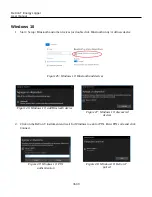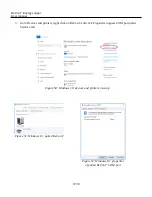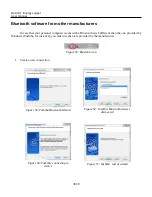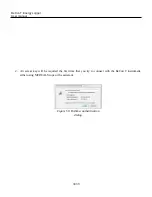
ReCon T Energy Logger
User manual
MODBUS in ReCon T
ReCon T instruments with Ethernet have a built-in TCP-MODBUS server that allows the user to
access real time data and to integrate the ReCon T in a network with other types of instruments.
Regarding the TCP-MODBUS standard, user must be aware of two important features of the ReCon
T´s TCP-MODBUS server:
1. Only Holding Registers are available to the user (due to the lack of digital inputs and outputs).
2. The Unit Identifier of the TCP-MODBUS header of the requests will be ignored, as the IP of the unit
(or the port forwarding method explained before) is used to rout the traffic.
Available real time measurements via MODBUS
The real time measurements available through the Holding Registers function of TCP-MODBUS are:
Address Variable
Format
Units
0
L1. Mean
Active power of 1 second reading
16 bit signed
decimal
1
L2. Mean Active power of 1 second reading
16 bit signed decimal
W
2
L3. Mean Active power of 1 second reading
16 bit signed decimal
W
3
Total Mean Active power of 1 second reading
16 bit signed decimal
W
4
L1. Mean Reactive power of 1 second reading
16 bit signed decimal
var
5
L2. Mean Reactive power of 1 second reading
16 bit signed decimal
var
6
L3. Mean Reactive power of 1 second reading
16 bit signed decimal
var
7
Total Mean Reactive power of 1 second reading
16 bit signed decimal
var
8
L1. Mean Apparent power of 1 second reading
16 bit unsigned decimal VA
9
L2. Mean Apparent power of 1 second reading
16 bit unsigned decimal VA
Only average values are available in real time. For maximum and minimum vales, use MedcalScope
Real time measurements are updated every second synchronized with the internal clock. As TCP-MODBUS is
asynchronous, measurements are not initiated on MODBUS demand but on the internal real time clock
8
Two´s complement sign-magnitude format
See Address 34 for power scaling comments
24/39
























